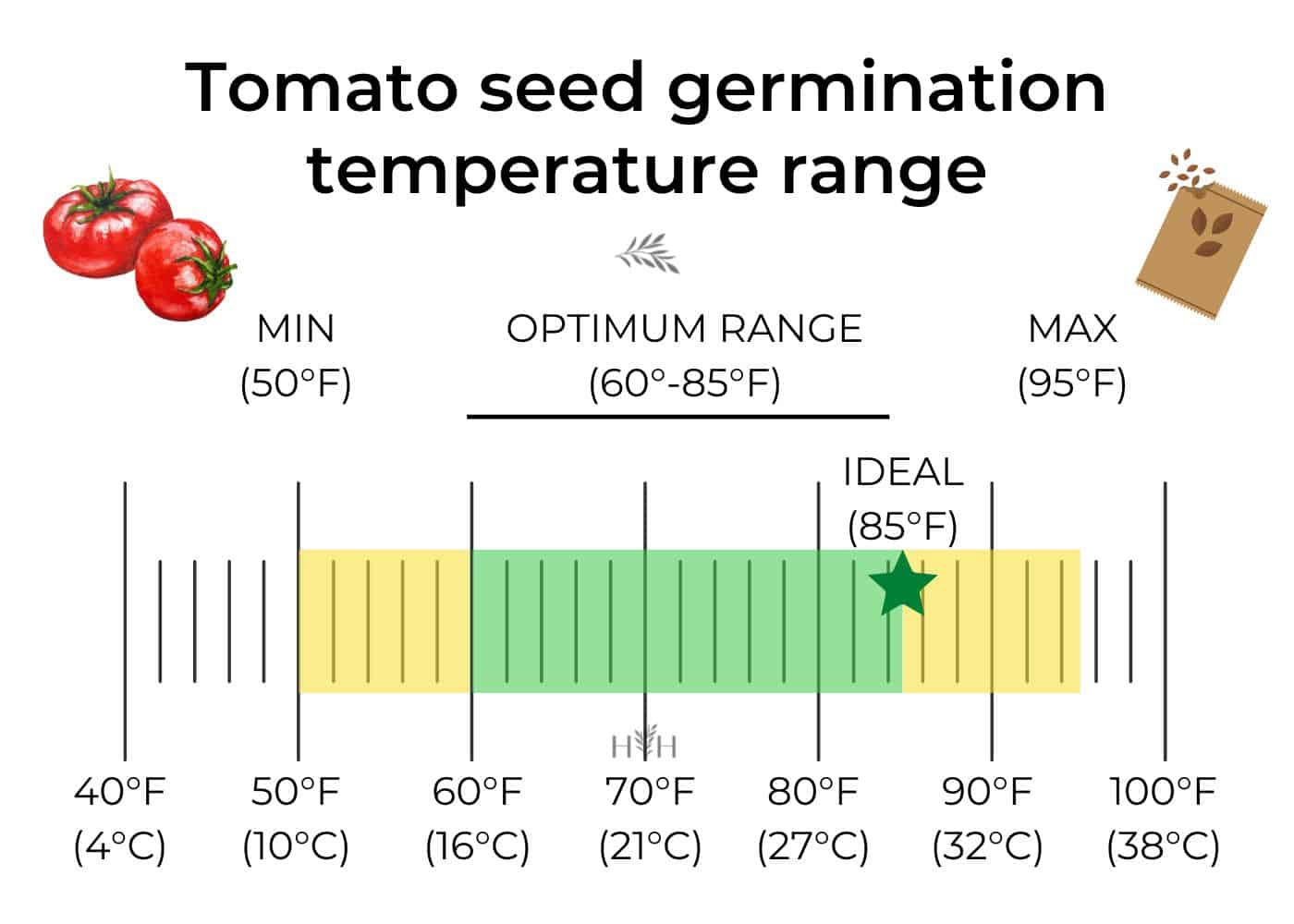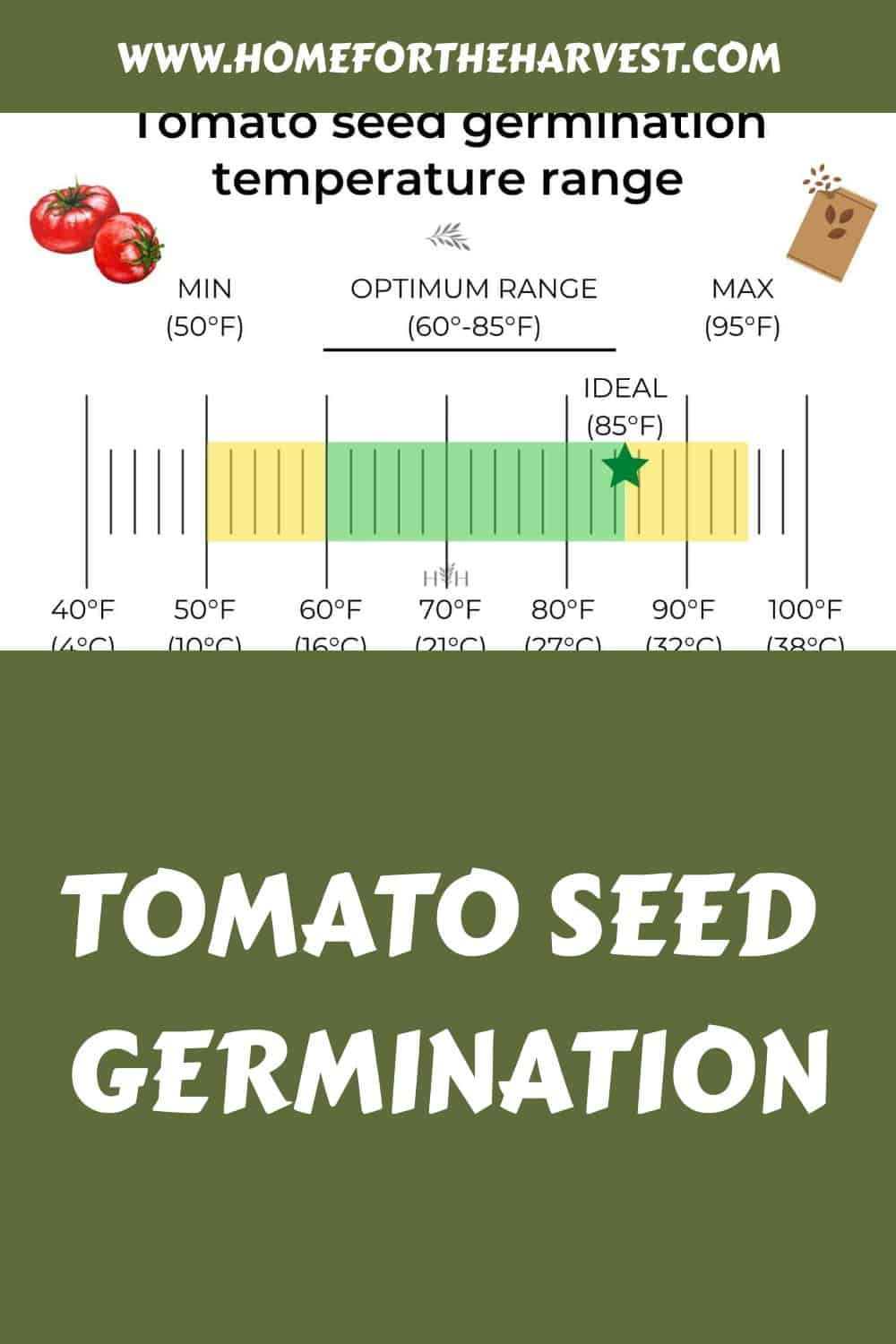Tomato season is here and it’s time to start thinking about how you can get the most out of your garden this year. Germinating tomato seeds is an easy process that anyone can do, regardless of their gardening experience. With a few simple steps for soil preparation, planting the seeds correctly, watering properly, and maintaining optimal temperature conditions – you will be sure to have a bountiful harvest in no time at all.
Tomato seed germination requirements
Tomato seeds need certain conditions to germinate. Most importantly, the seeds need water, and they need to be in an environment that’s at a nice warm temperature. Dry seeds will not germinate, and tomato seeds won’t germinate if they are too cold (or too hot).
Tomato seeds germinate most quickly at an optimum temperature of 85°F (29°C). It’s alright if you can’t get the ambient temperature that high (although heating mats can help), though. The seeds germinate usually within a week at temperatures somewhat lower than this, in the range of 60°-85°F (16°-29°C). Germination of tomato seeds is slow between 50°-60°F (10°-16°C), and germination rarely occurs at temperatures under 50°F (10°C).
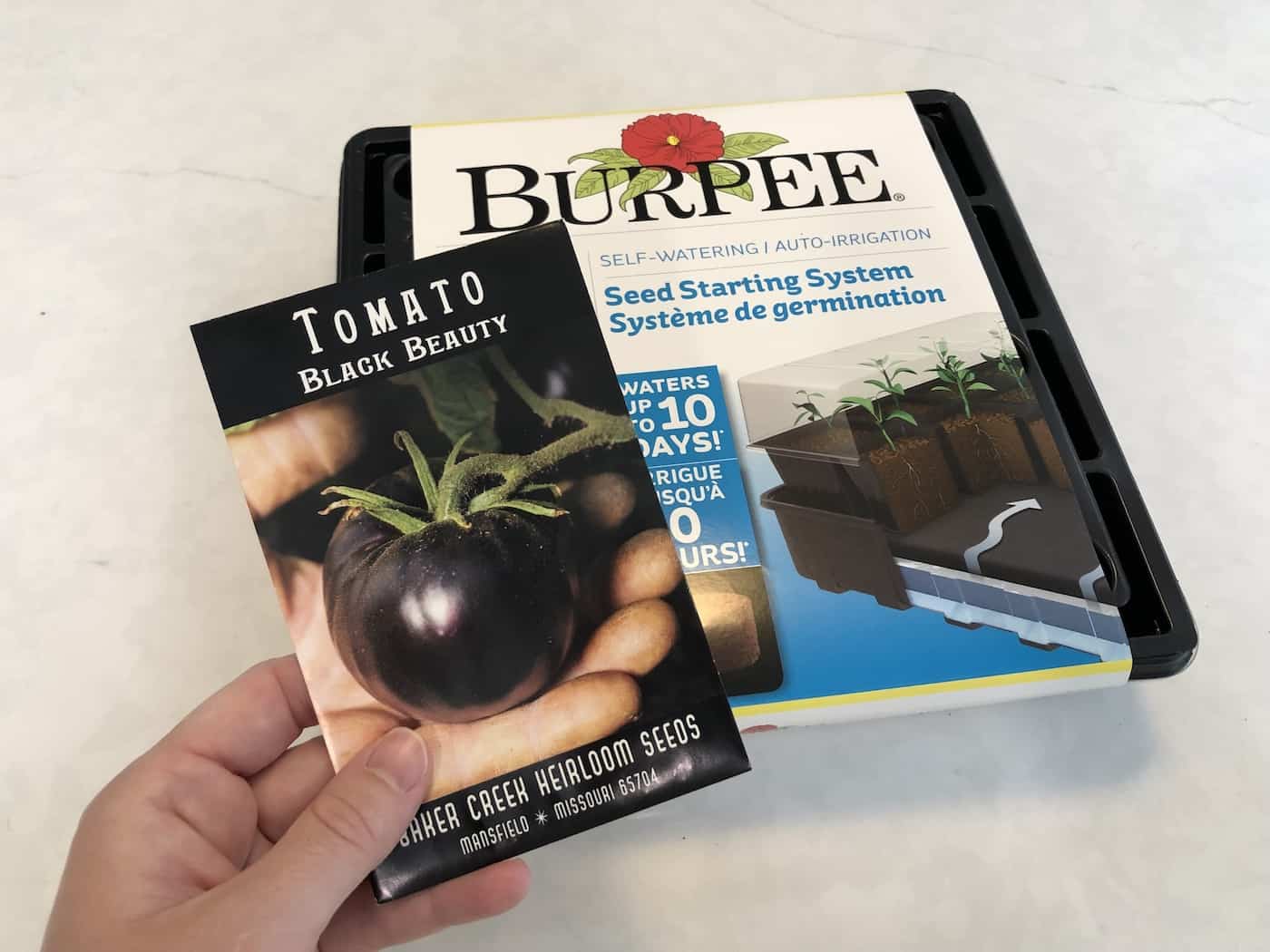
Planting tomato seeds
Planting tomato seeds is an easy and rewarding process. Before planting, it’s important to prepare the soil. The best potting soil for tomato seedlings should be light and well-draining with a pH between 6.0 and 7.0. There are lots of high-quality seed starting mixes available in garden centers.
Once the soil is ready, you can begin to plant your tomato seeds. Start by making small holes in the ground about 1/4 inch deep using a finger or pencil eraser end – this will help keep moisture in while also allowing airflow around each seedling as they grow.
Place 1-3 seeds per hole at least 2 inches apart from each other so that they have enough room to spread out when germinating (sprouting). Water lightly after sowing but don’t overwater as too much moisture can cause the rotting of young plants.
Tomato seeds need warmth to germinate, so cover them with plastic wrap or place them in a warm area until sprouts appear – usually within 5-7 days depending on temperature conditions. Once sprouted, remove any covering material and give plenty of sunlight exposure for strong growth throughout their life cycle.
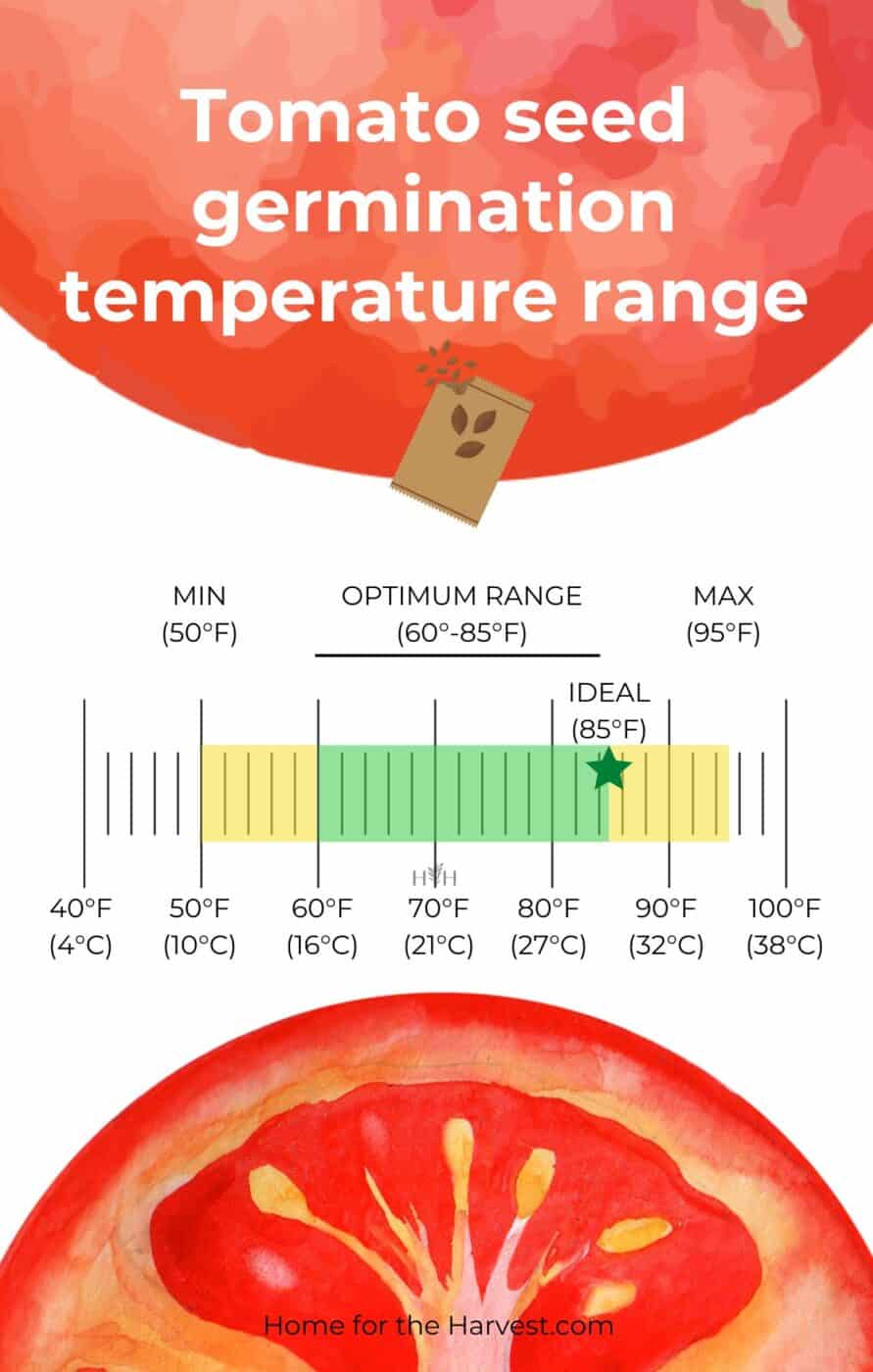
Temperature for tomato seed germination
When it comes to growing tomatoes, the temperature is an important factor in their germination. The ideal temperature for tomato seed germination is 85 degrees Fahrenheit, and the optimal range is between 60-85 degrees Fahrenheit. Seeds won’t germinate below 50 degrees or above 95 degrees Fahrenheit.
If you’re trying to grow tomatoes indoors, you’ll need a heat source like a heating pad or warm light bulb that can keep your soil at the right temperature. You should also make sure your indoor space isn’t too humid as this can prevent seeds from sprouting properly.
In outdoor gardens, there are several ways to ensure that temperatures stay within the optimal range for tomato growth. If you live in an area with cold winters, consider using row covers or cloches (transparent plastic domes) over your plants during colder months to protect them from frost damage and keep them warm enough for successful germination and growth. Additionally, adding organic mulch around plants helps insulate roots from extreme temperatures while keeping moisture levels consistent throughout the season.
You may also want to consider planting varieties of tomatoes that are better suited for cooler climates if you live in an area where temperatures dip significantly during winter months. Some varieties have been bred specifically for cooler weather conditions so they can still thrive even when nighttime temps drop into the 40s.
Finally, be sure to monitor soil temperatures regularly throughout the season by using a thermometer probe inserted into the ground near each plant’s root zone. This will help you determine whether additional measures need to be taken such as adding more mulch or covering with row covers/cloches if necessary.
Temperature is a key factor in successful tomato seed germination, and it’s important to ensure the temperature is right before moving on to maintenance.
Watering your seeds and seedlings
Watering is an essential part of gardening, and it’s especially important during the germination process. Proper watering helps ensure that your seeds have enough moisture to sprout and grow into healthy plants.
When you first plant your seeds, water them lightly with a spray bottle or fine mist setting on a hose nozzle. This will help keep the soil moist without washing away any of the tiny seedlings. As soon as you see signs of growth, increase your watering frequency but be careful not to overwater; too much water can cause root rot and other problems for young plants.
Generally speaking, most newly planted seeds need about 1 inch (2-3 cm) of water per week until they reach maturity. This should be spread out over multiple days rather than all at once so that it has time to soak into the ground properly before evaporating off again due to heat or windy conditions.
If possible try using rainwater instead of tap since it contains fewer chemicals that could harm delicate seedlings; if this isn’t an option then make sure you use a lukewarm or room temperature tap instead of cold as this can shock new roots when they come into contact with it. Additionally, avoid getting any foliage wet while watering as this can lead to fungal diseases such as powdery mildew which will damage leaves and stunt growth in young plants.
It’s also important not to forget about weeding – removing weeds from around newly planted seeds helps prevent competition for resources like sunlight and nutrients which could otherwise slow down their development significantly. Finally, remember that some types of vegetables require more frequent watering than others – tomatoes for example may need up to 2 inches (5 cm) per week whereas carrots only need half an inch (1 cm). Pay attention to these differences when planning out how often each type needs to be watered throughout its growing season.
Proper watering is essential for successful tomato seed germination, and the right temperature is just as important.
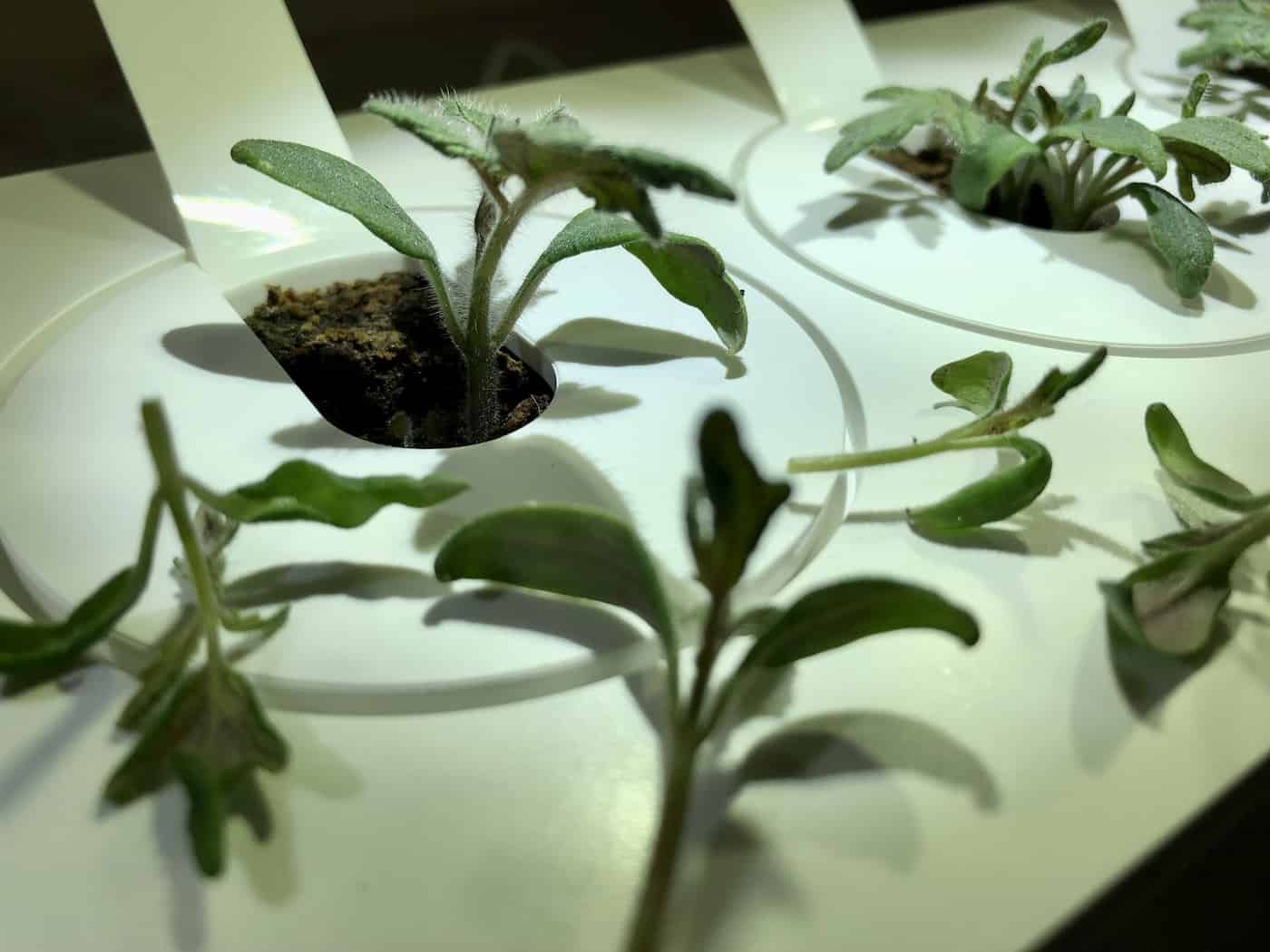
Caring for tomato seedlings
Once your tomato seedlings have sprouted, it’s time to start caring for them. This includes thinning out weak plants and providing adequate light and nutrients.
Thinning out the weaker plants is important because it allows the stronger ones to thrive without competition for resources like water and sunlight. To do this, use scissors or a small pair of gardening shears to cut off any extra seedlings that are growing too close together. Make sure you don’t pull up any of the healthy plants by mistake.
Next, make sure your tomato seedlings get enough light each day – at least 6 hours per day is ideal. If they’re not getting enough natural sunlight from windows or outdoors, consider investing in grow lights so they can get what they need indoors as well.
Finally, provide your tomatoes with all the necessary nutrients through fertilizer or compost tea (a liquid made from steeping compost). Depending on how much space you have available in your garden bed or potting soil container, you may want to supplement with additional organic matter such as peat moss or vermiculite for added nutrition throughout their growth cycle.
Watering regularly is also essential; aim for about 1 inch per week during dry spells but be careful not to overwater either since too much moisture can lead to root rot and other issues down the line. Monitor your soil’s moisture levels often using a simple finger test – if it feels damp when lightly pressed into then there’s no need for more water yet.
By following these steps every few weeks until harvest time arrives, you will ensure that your tomatoes are healthy and ready to eat come summertime.
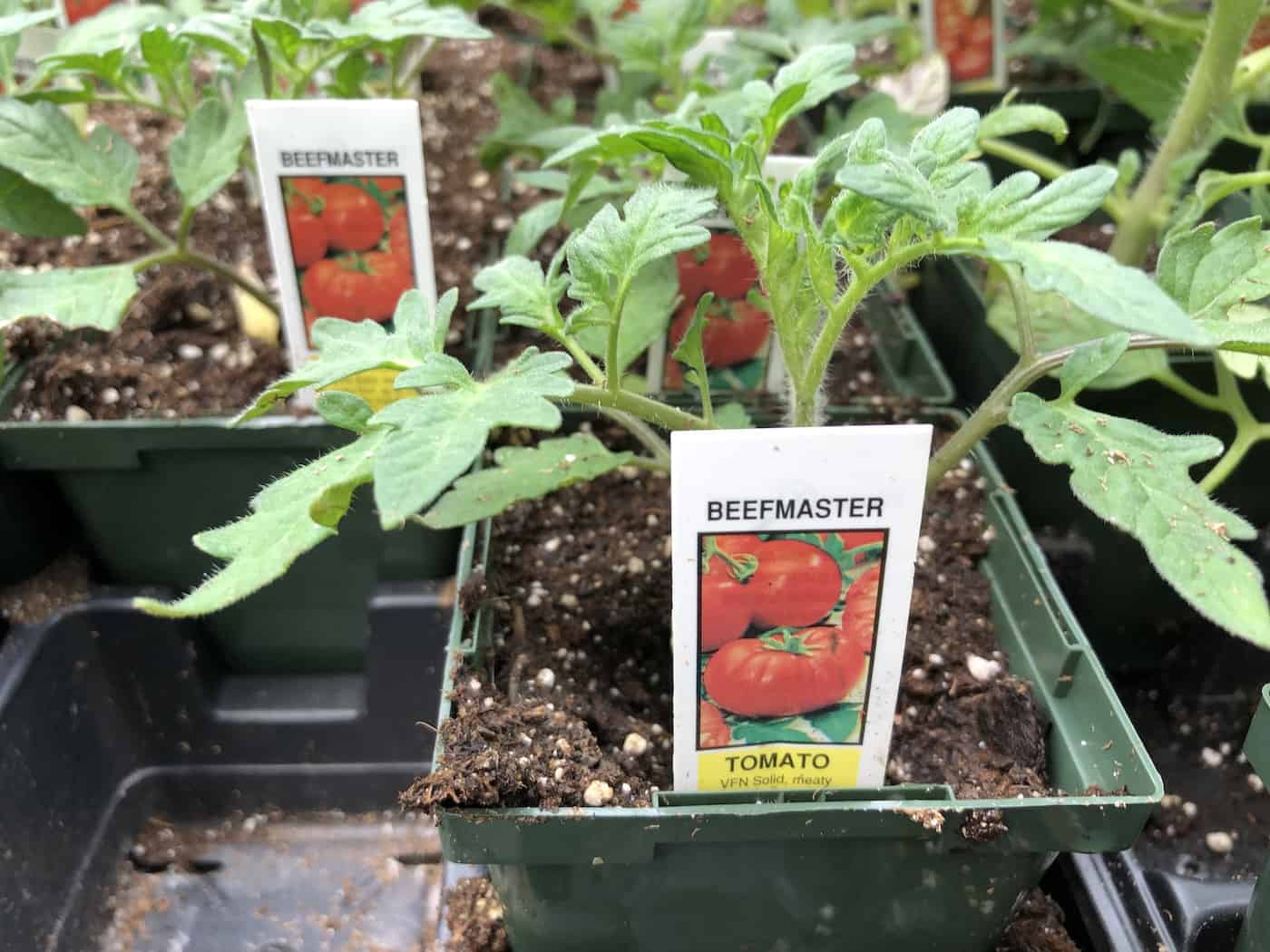
Soil preparation before transplanting
Soil preparation is an important step for successful tomato seed germination. The type of soil you use will depend on the variety of tomatoes you are planting, but in general, it should be well-draining and nutrient-rich.
To prepare your soil, begin by removing any weeds or debris from the area where you plan to plant your seeds. Then mix in a layer of compost or aged manure to provide essential nutrients for healthy growth. If needed, add sand or peat moss to help improve drainage and aeration. Finally, rake the soil until it’s level and smooth before planting your seeds according to package instructions.
When selecting a spot for your tomato plants, make sure they will get at least 6 hours of direct sunlight each day as this helps ensure strong growth and good yields throughout the season. Additionally, keep in mind that some varieties may require additional support such as cages or stakes during their growing period; so be sure to have these items ready ahead of time if necessary.

FAQs about tomato seed germination
What is the best way to germinate tomato seeds?
Germinating tomato seeds is a relatively easy process. Start by filling a container with moist potting soil, then place the seeds on top of the soil and lightly cover them with more soil. Place the container in an area that receives indirect sunlight and keep it at room temperature. Water regularly to keep the soil moist but not soggy. In about 5-10 days, you should see sprouts emerging from the surface of your seed tray. Once the seedlings are a few inches tall, you can transplant them into individual pots or directly into your garden.
Do you soak tomato seeds before planting?
Yes, it is recommended to soak tomato seeds before planting. Soaking the seeds helps speed up germination and gives them a better chance of growing healthy plants. It also helps remove any bacteria or fungi that may be present on the seed coat. To soak tomato seeds, place them in a bowl of warm water for 12-24 hours prior to planting. After soaking, drain off the excess water and plant the seeds immediately into moist soil at a depth of about 1/4 inch deep.
Do tomato seeds need dark to germinate?
Yes, tomato seeds need darkness to germinate. They should be planted in a shallow hole and covered with soil or compost. The ideal temperature for germination is between 70-85°F (21-29°C). Tomato seeds require moisture to begin the process of sprouting, so make sure the soil is kept moist but not soggy. If you are planting indoors, it’s best to cover the seed tray with a dark cloth or newspaper until they have sprouted. Once they have started growing, you can move them into direct sunlight.
Why are my tomato seeds not germinating?
Tomato seeds may not germinate for a variety of reasons. Poor soil conditions, such as too much or too little moisture, can prevent the seed from sprouting. Additionally, if the temperature is too cold or hot for tomato plants to thrive, then the seeds will not germinate. Finally, if the seed is old and has been stored in an environment that was either too humid or dry it could have lost its viability and will no longer be able to grow into a plant. If your tomato seeds are not germinating, make sure you are providing them with ideal growing conditions including adequate water and warmth before giving up on them completely.
Before you go…
With the right soil preparation, planting seeds, watering, temperature, and maintenance you will have success in tomato seed germination. It may take some trial and error but once you get it down pat you’ll have plenty of delicious tomatoes to enjoy.


